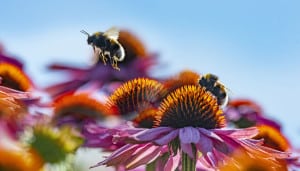
 Spring has sprung (or will very soon!) – which means that it’s time to give your garden a fresh look and make sure it’s ready for the year to come. There are so many ways that you can optimize your growing process to match the season you’re in, costing you very little time, energy or resources. We’re here to highlight some of the top ways you can boost your harvest this year without breaking the bank, starting with some strategic legwork in your spring season.
Spring has sprung (or will very soon!) – which means that it’s time to give your garden a fresh look and make sure it’s ready for the year to come. There are so many ways that you can optimize your growing process to match the season you’re in, costing you very little time, energy or resources. We’re here to highlight some of the top ways you can boost your harvest this year without breaking the bank, starting with some strategic legwork in your spring season.
Read on for our full list of spring garden tips.
1. Declutter and clean
This may seem like common sense – however, leaving too much dead debris and foliage behind from the winter and fall months can cause an imbalance in your soil’s chemical makeup, which can limit your growth potential later. You may choose to leave a few leaves and sticks behind for your decomposers, but you’ll want to rake and prune any of the major deadness or leaf piles away before continuing on your spring care list.
2. Freshen up your soil
If you haven’t done it yet this year, it may be time to freshen and test your soil. Depending on where you live, you may be able to do this through your state’s local extension service site, or you may choose to purchase your own kit if you’re in a time crunch. After you have the data, you can choose to alter and enhance your soil accordingly – giving you plenty of benefits at just a fraction of the time it would normally take to do the process via trial and error.
3. Get preemptive about pests
While bugs are a vital part of your garden’s composition and culture, too many can be quite a problem as the months grow warmer. Consider scheduling quarterly checks to ensure that your pest count isn’t too high or out of control – and you can also research preventative methods (such as ladybugs) to keep them at bay year-round. Not sure what to look for? Generally, “good” or low-impact pests include:
“Bad” or negative pests can include:
Before you turn to pesticides or commercial killers to address a bug issue, you may also try other natural mix-ins and perimeter liners – such as cinnamon, paprika, diatomaceous earth and other organic compounds.
4. Update your irrigation system
If you have the resources, you may consider updating your irrigation system to something lower impact. Water waste is a chronic problem across the U.S., and can be mitigated with some savvy updates to your current irrigation practices. Small, simple steps are all we need to make progress – so don’t feel pressured to do a total system overhaul if you don’t have the budget for it at the moment.